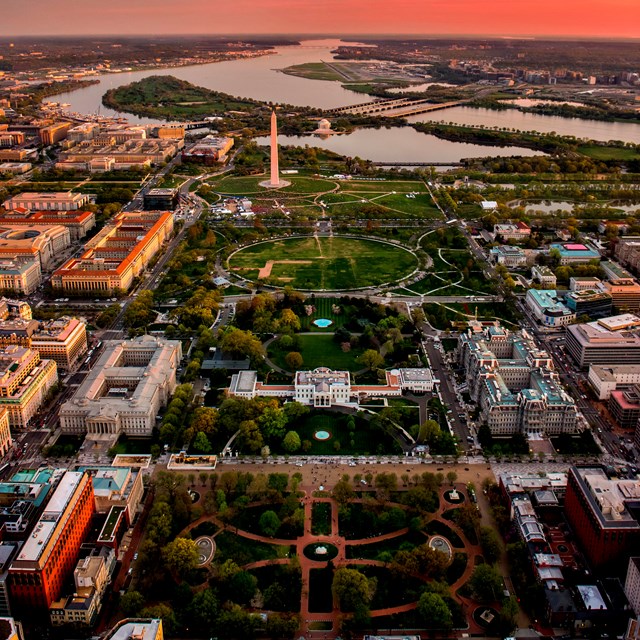Last updated: January 23, 2023
Article
Restoring the National Mall Turf
From 2010 to 2016, National Mall and Memorial Parks staff, oversaw the enormous task of renovating the National Mall turf. The Mall continued to be one of the most popular tourist spots in the nation during this project. Ongoing management the restored turf requires adherence to the National Mall and Memorial Park's Turf Management and Event Operations Guide and National Park Service Turf Management best practices.
Restoring the National Mall Turf: Before and After


Left image
The renovated National Mall Turf in front of the US Capitol Building.
Credit: NPS
Right image
The National Mall Turf before the renovation project.
Credit: NPS
Getting Started
The renovation of the Mall turf had many components to make it as sustainable as possible. Our three "legs" of turf sustainability were infrastructure, agronomy, and use management. All of these "legs" are needed; if one fails then the turf stand will fail.

NPS Photo.
Infrastructure
The renovation of the infrastructure included engineering soils to resist compaction, choosing turf varieties that could resist foot traffic, drainage to keep the soil at optimum moisture for plant growing and avoid compaction, and an irrigation system to promote growth and help with recovery. Hardscape was widened and increased in order to give places for event setup that is not on turf.

NPS
Agronomy
The agronomy program is a regimen of aerifying, fertilization, water management, regular mowing, and seeding. All of these are aimed at providing everything the turf stand needs- air, water, pore space, nutrients, succession, and grooming. All of these actions can produce a dense and vibrant lawn.

NPS
Visitor Use Management
The use management aspect was in many ways the most challenging. Landscapes are not often seen as having capacity issues and people are not use to having use limitations, so this required a great deal of outreach and education. Strategies include recognizing decline and closing for rest periods, limitations to how long stages, tents, and other structures are allowed on turf, prescribed turf protective decking, and vehicle/weight limitations.
Completed in late 2016 in time for the 2017 Inauguration, the Mall was at a very tender stage of grow in. Protective decking was installed on 16 of the 18 acres to protect the turf from Inauguration sized crowds. The Mall was able to stand up to that intense use even at the relatively young age of the finished product.
Although the Mall renovation is successful, we will continue to learn more about how to make “America’s Front Lawn” more durable and sustainable. Rest assured, our strategies will fall within one of those three legs of sustainability.
For detailed documents and plans regarding the reconstruction of the National Mall turf soil, check out its project page on our Planning, Environment & Public Comment system.



